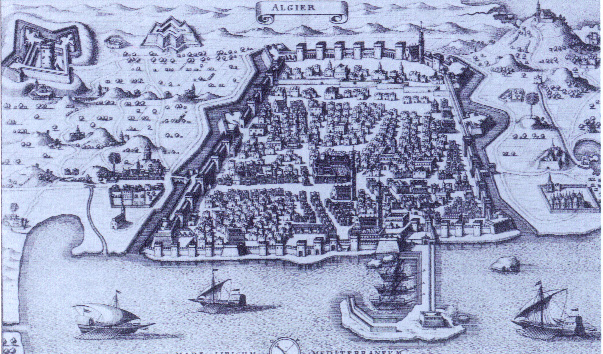The Irish village of Baltimore is attacked by Algerian pirates.
The sack of Baltimore, with its mixture of opportunism, careful planning and clockwork execution, was typical of the techniques employed in corsair land raids. On 17 June 1631, two vessels sailing out of Algiers—a 300-ton Dutch-built man-of-war, armed with 24 pieces of ordnance and crewed by 200 men, and another vessel of approximately half the size and ordnance—captured a ship from Dartmouth ‘betwixt England and Ireland’. Corsairs used a variety of duplicitous methods to effect the smooth capture of a target ship, including running up the flags of friendly nations, wearing European clothing and hailing crews in their native languages. Aboard their prize was Edward Fawlett and a crew of nine. Having stripped the ship of any useful goods, the attackers scuttled it.
By 19 June the raiders were off the Old Head of Kinsale, where they captured two fishing-boats from Dungarvan, one captained by John Hackett, the other by Thomas Carew, both containing five-man crews. The two twelve-ton boats, now manned by corsairs, joined the little flotilla, which continued westward. Aboard the lead vessel Captain Morat Rais, a Dutch convert to Islam with extensive experience in the North Sea, demanded that Hackett pilot them into Kinsale. Perhaps aware of the presence of the Fifth Lion’s Whelp, under the command of Captain Hooke of the Royal Navy, in the harbour, Hackett allegedly persuaded Rais to continue on to Baltimore.
Baltimore was a familiar harbour to many seamen and had a chequered and controversial history. In 1605 Thomas Crooke purchased a 21-year lease on the town from Sir Fineen O’Driscoll, and set about enticing English settlers to the area. According to a 1608 report from a Spanish ship, most of the native Irish elected not to remain. Crooke is believed to have chosen Baltimore with the specific intention of using it as a supply point for pirates, a charge he was called to answer before the privy council in 1608. Although he was eventually acquitted, the verdict may have been influenced more by a political desire to see an English presence in West Cork than by any genuine belief in Crooke’s innocence. When one considers a contemporary Venetian assertion that Baltimore was one of the two chief nests of English pirates, the charges of piracy against the town gain a measure of credence. By 1631 Baltimore was a small English enclave surrounded by the hostile O’Driscolls. The town relied on the sea and was struggling financially following the death of the energetic and charismatic Crooke.

